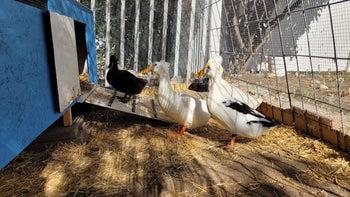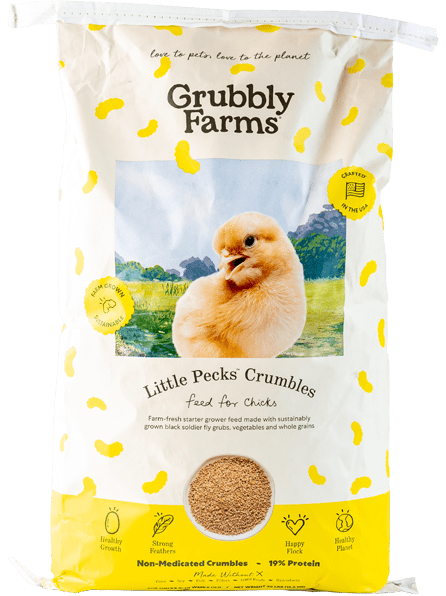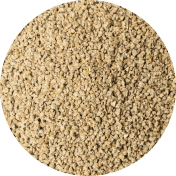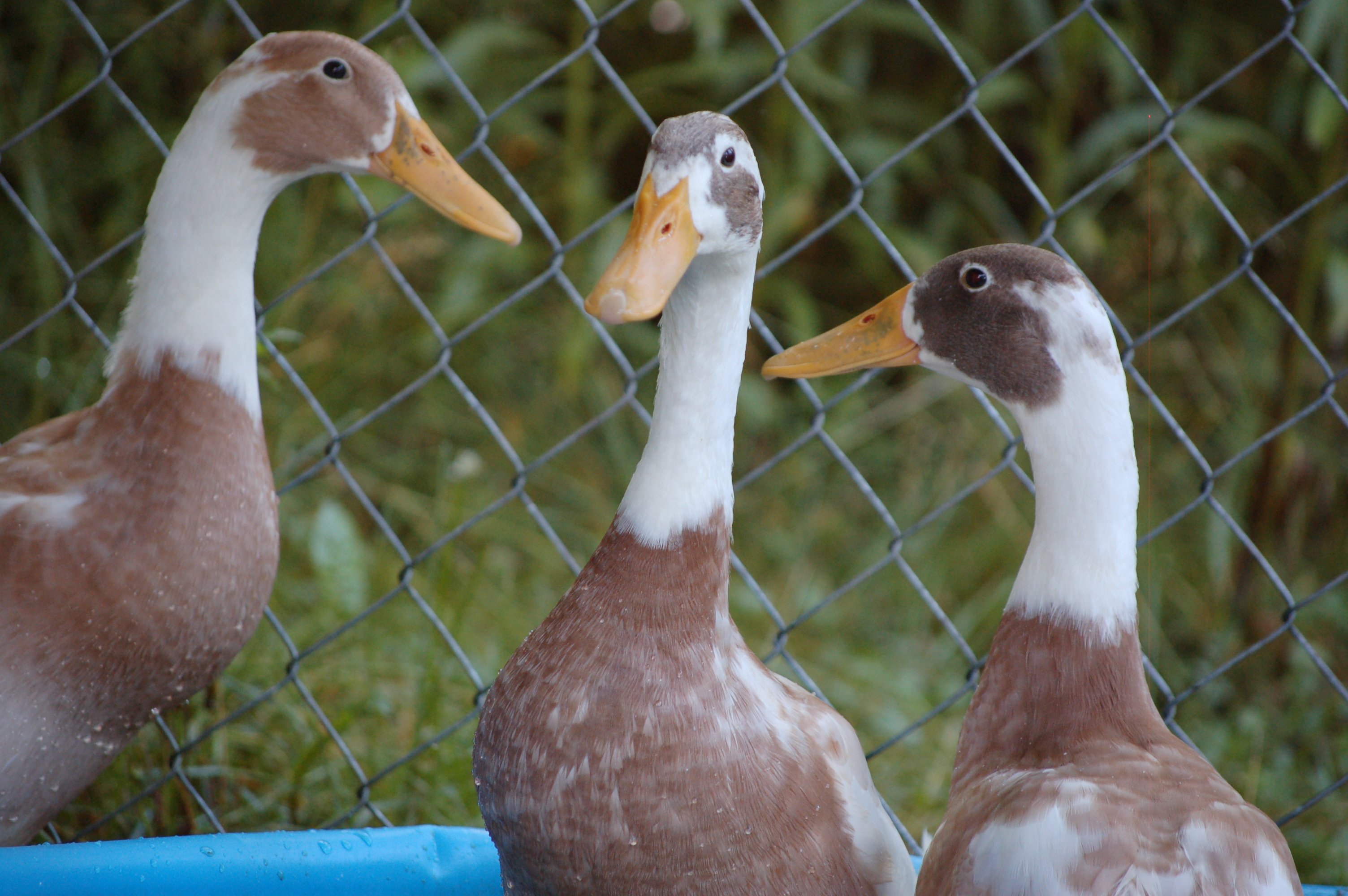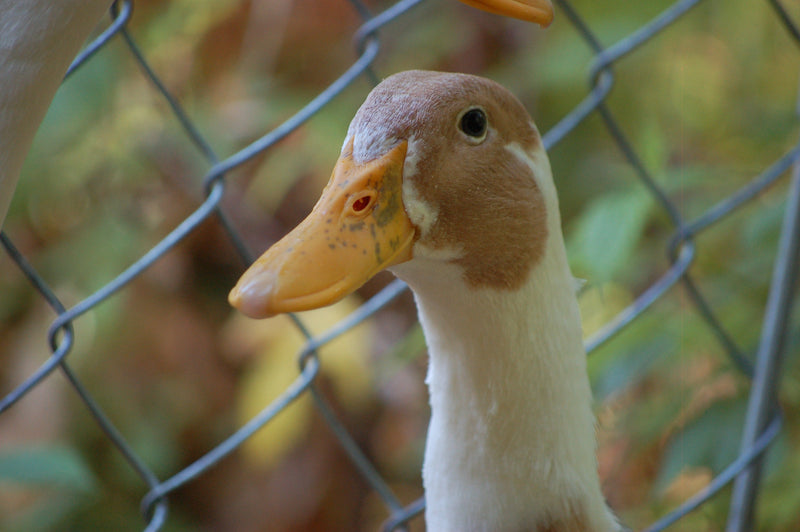Creating a safe and comfortable house for your ducks is essential for their well-being and happiness. Ducks have specific needs that must be met to ensure they thrive in their environment. Whether you are a novice duck keeper or an experienced enthusiast, understanding the key elements of a duck-friendly habitat will help you provide the best care for your feathered friends. Ducks require a secure and cozy living space, access to clean water for drinking and swimming, protection from predators, and the freedom to explore their surroundings safely.

In this guest post, written by Melanie, duck mom and the face behind Ducks of Providence, we'll cover the best practices for setting up a duck-friendly space. We will focus on four main areas: housing for ducks, water management, predator protection, and free-ranging considerations. Proper housing includes creating a duck house that offers ample space, ventilation, and predator-proof features. Effective water management involves providing clean drinking water and suitable swimming areas, both crucial for maintaining ducks' health and hygiene. Predator protection requires implementing robust measures to safeguard ducks from various threats, while thoughtful free-ranging practices balance the benefits of natural foraging with the need for safety.
By integrating these essential elements into your duck-keeping routine, you can ensure that your ducks lead happy, healthy lives. Let's dive into each aspect in detail to help you create the perfect habitat for your ducks!
Duck Housing Needs: Building the Perfect Duck Haven
Creating a safe and cozy home for your ducks is one of the most important aspects of duck keeping. Ducks need a well-designed shelter to protect them from the elements, predators, and other potential hazards. A thoughtfully constructed duck house not only ensures their safety but also contributes to their overall health and happiness. With the right setup, your ducks can enjoy a comfortable and secure environment, allowing them to thrive and live contentedly.
When it comes to housing your ducks, the goal is to provide a shelter that balances comfort and security. Ducks have specific needs that must be met to ensure they remain healthy and active. The housing should be spacious enough to allow for their natural behaviors, such as foraging, bathing, and nesting. Additionally, it should be constructed with materials that offer protection against extreme weather conditions, from the cold of winter to the heat of summer. Proper ventilation, insulation, and drainage are key factors in maintaining a healthy living space for your ducks.

Moreover, a good duck house should include features that address safety concerns, such as predator-proof fencing and secure latches. Ducks are vulnerable to a range of predators, and taking preventive measures is crucial. Providing a well-designed outdoor run or pen, along with an indoor coop, will give your ducks the freedom to explore while keeping them protected. By considering all these elements, you can create the perfect duck haven where your feathered friends can thrive, leading happy and healthy lives.
Here are the key elements to consider:
- Size and Space: Ducks need ample space to move around comfortably. A good rule of thumb is to provide at least 4 square feet of space per duck inside their coop. For the outdoor run, aim for at least 10-20 square feet per duck. This ensures they have enough room to exercise and exhibit natural behaviors.
- Duck House (Coop): The coop should be well-ventilated yet draft-free. Ducks are hardy birds, but they need protection from extreme weather conditions. Ensure the coop has proper insulation for cold winters and adequate airflow for hot summers. A sloped roof helps with drainage and prevents water accumulation. Use absorbent bedding materials like straw, wood shavings, or hay to keep the coop dry and comfortable. Change the bedding regularly to maintain cleanliness and reduce the risk of disease.
Adding a personal touch with decorations and custom coop signs can make the coop more visually appealing and reflect your style and creativity.
- Run/Pen: The run or pen is the outdoor area where ducks can roam and forage. It should be enclosed with sturdy, predator-proof fencing. The fence should be at least 4-6 feet high and buried a few inches into the ground to prevent digging predators like foxes and raccoons. Hardware cloth is preferred over chicken wire, as raccoons can easily tear through chicken wire. Covering the run with netting or wire mesh provides protection from aerial predators like hawks and owls.
- Nesting Boxes: While ducks don’t necessarily need nesting boxes like chickens, they still like to have a cozy place to lay their eggs. Each box should be about 14x14 inches. Place them in a quiet, dimly lit area of the coop to encourage laying.
Water Management: Keeping Ducks Happy and Healthy
Water is vital for ducks, not only for drinking but also for their overall well-being. Ducks have a unique relationship with water, which goes beyond mere hydration. They need water for preening, swimming, and even feeding. Ducks often submerge their heads in water to clean their nostrils and eyes, a behavior crucial for their respiratory health. Proper water management ensures your ducks can engage in these essential activities, contributing to their overall happiness and health.
Managing water for ducks involves providing a constant supply of fresh, clean drinking water. Ducks need access to water deep enough for them to dunk their heads, as this helps them maintain clear nasal passages and eyes, reducing the risk of infections. In addition to drinking water, swimming water is crucial for ducks. Swimming keeps their feathers in good condition, aids in temperature regulation, and provides necessary exercise. Whether through kiddie pools, large tubs, or natural ponds, ensuring your ducks have access to swimming water is key to their well-being.
Effective water management for ducks also includes maintaining clean and safe water environments. Regularly changing and monitoring the water prevents the buildup of harmful bacteria. Good drainage around water areas helps keep the ground dry and reduces mud, which can harbor diseases. Different options for swimming water, such as kiddie pools, small ponds, and even buckets for dunking, cater to various needs and setups. By understanding and implementing proper water management practices, you can ensure your ducks remain happy, healthy, and thriving in their environment.

Here's how to manage water effectively:
- Fresh Drinking Water: Ducks need constant access to clean, fresh water for drinking. Use waterers that are deep enough for ducks to submerge their bills, as this is crucial for them to clean their nostrils and prevent respiratory issues.
- Daily Maintenance: Refresh the water at least once a day, more frequently if it becomes soiled. Ducks can be messy drinkers, so regular cleaning is necessary.
- Water Containers: Opt for water containers that are easy to clean and refill. Nipple waterers will not work for ducks as they are not able to get their bills in.
- Buckets: Deep enough buckets can be used for dunking their heads, allowing ducks to clean their nostrils effectively.
- Swimming Water: Ducks love to swim, and providing a swimming area is essential for their health and happiness. Bathing helps them keep their feathers clean and their skin healthy.
- Types of Swimming Areas:
- Kiddie Pools: Affordable and easy to clean, kiddie pools are a great option for small to medium flocks.
- Large Tubs: These can serve as an alternative to kiddie pools, providing enough space for several ducks to swim.
- Small Ponds: Permanent ponds can be a fantastic addition, offering a natural swimming experience. They require more maintenance and careful monitoring to ensure water quality.
- Larger Ponds and Streams: For those with more land, larger ponds or access to natural streams can provide an excellent swimming habitat. Ensure safety features are in place to prevent drowning, especially for young ducks.
- Frequency of Water Changes: Swimming water should be changed frequently. Depending on the size of your setup and the number of ducks, you might need to change the water daily or every few days to keep it clean and free of bacteria.
- Drainage: Good drainage is crucial to prevent the area around the water from becoming muddy and unsanitary, which can lead to health problems for your ducks.
- Location and Setup: Place the swimming area on a slight slope to facilitate natural drainage. Alternatively, install a drainage system to channel excess water away.
- Materials: Use gravel or sand around water areas to improve drainage. This helps keep the ground firm and reduces the risk of puddles and mud.
- Ground Cover Comparison:
- River Rocks: Provide excellent drainage and reduce mud but can be hard on ducks' feet if not placed properly.
- Artificial Turf: Easy to clean and manage but can be expensive and might need frequent cleaning.
- Mulch: Natural and comfortable for ducks, but can get muddy quickly and needs regular replacement.
- Water Safety: Especially important for ducklings, ensuring that the water area is safe prevents accidents and drowning.
- Supervised Swimming: For young ducklings, always supervise their swim time. Use shallow water containers or ensure they have easy exit points.
- Water Depth: Adult ducks can handle deeper water, but always provide a gradual slope or ramps so they can exit the water easily.
Predator Protection: How to Keep Your Ducks Safe
Predators pose a significant threat to ducks, making robust protection measures crucial for their safety. Ducks, whether kept as pets or for egg production, are vulnerable to various predators, including foxes, raccoons, hawks, and even domestic dogs. Ensuring that their living environment is secure from these threats is essential for their well-being and longevity. Effective predator protection involves a combination of physical barriers, secure housing, and vigilant monitoring.
One of the most effective ways to protect your ducks is by constructing secure fencing around their living area. Sturdy, predator-proof fencing made of hardware cloth is preferable to chicken wire, which can be easily torn apart by determined predators like raccoons. The fencing should be at least 4-6 feet high and buried several inches into the ground to prevent predators from digging underneath. Additionally, covering the top of the run with netting or wire mesh provides protection from aerial predators such as hawks and owls. Strong, reliable latches on all doors and gates are necessary, as raccoons are known for their dexterity in manipulating simple latches.
Creating a safe nighttime environment is equally important, as many predators are most active after dark. Ducks should be locked in a secure coop during the night, with reinforced walls and roofs to prevent break-ins. Motion-activated lights and alarms around the perimeter can serve as deterrents, startling potential predators and alerting you to their presence. Guardian animals, such as dogs or geese, can also provide an added layer of protection, as their presence can deter predators from approaching. By implementing these comprehensive measures, you can significantly reduce the risk of predator attacks and keep your ducks safe and secure.

Here's how to keep your ducks safe:
- Secure Fencing: Use sturdy, predator-proof fencing around the duck run. The fence should be at least 4-6 feet high and buried a few inches into the ground to prevent digging predators like foxes and raccoons. Hardware cloth is preferred over chicken wire, as raccoons can easily tear through chicken wire.
- Nighttime Safety: Lock ducks in their secure coop at night. Ensure the coop has strong latches and is constructed with durable materials to withstand predator attacks. Raccoons are clever and can manipulate simple latches, so opt for complex or double latches.
- Overhead Protection: Install netting or wire mesh over the run to protect against aerial predators like hawks and owls. This also helps to keep wild birds from accessing your ducks' food and water, reducing the risk of disease transmission.
- Motion Sensors and Lights: Motion-activated lights or alarms can deter nocturnal predators. Place them around the perimeter of your duck area for added security. Fake owls can also serve as a deterrent, though they might need to be moved occasionally to remain effective.
- Common Predators: Here are some common predators to watch out for:
- Foxes: Known for their cunning, they can dig under fences to access your ducks.
- Raccoons: Highly intelligent and dexterous, capable of opening simple latches and tearing through weak materials.
- Hawks and Owls: Aerial predators that can swoop down and snatch ducks, especially ducklings.
- Snakes: Can pose a threat to ducklings and eggs.
- Coyotes and Dogs: Larger predators that can break through or jump over weak fences.
Creating a Safe Outdoor Space: Aviary Considerations
An aviary can be an excellent option for providing a safe outdoor space for your ducks. It combines the benefits of an enclosed run with added protection and ample space for your ducks to explore. An aviary offers a secure environment where ducks can enjoy the outdoors without the constant threat of predators. This setup allows ducks to engage in natural behaviors like foraging, swimming, and socializing, all within a protected space.
Designing an aviary involves creating a structure that is both spacious and secure. The aviary should be large enough to allow your ducks to move around freely, with at least 10-20 square feet per duck. This space ensures they can exercise and interact comfortably. The structure should have sturdy mesh walls and a solid roof to protect against predators from all angles, including aerial threats like hawks and owls. Using hardware cloth instead of chicken wire for the walls and roof is advisable, as it is more resistant to tearing by determined predators.
In addition to security, an aviary should provide an enriching environment for your ducks. Include natural elements like logs, plants, and shallow ponds to create a stimulating habitat that encourages natural behaviors. Ensure there are shaded areas and plenty of room for your ducks to retreat if they feel threatened or need a break from the sun. Regular maintenance is essential to keep the aviary clean and safe, so remove debris and inspect the structure for any damage regularly. By thoughtfully designing and maintaining your aviary, you can offer your ducks a safe and enriching outdoor space where they can thrive.

Top tips for building an aviary:
- Structure and Design: An aviary is typically a large, enclosed structure with a solid roof and mesh walls. Ensure the mesh is small enough to prevent predators from entering and sturdy enough to withstand their attempts to breach it.
- Size: The aviary should be spacious enough to allow your ducks to move freely, forage, and swim. Provide at least 10-20 square feet per duck, similar to an outdoor run.
- Enrichment: Include natural elements like logs, plants, and shallow ponds to create an enriching environment. This keeps ducks entertained and encourages natural behaviors.
Free-Ranging Considerations: Balancing Freedom and Safety
Free-ranging allows ducks to explore and forage more naturally, providing them with a richer and more varied environment. This practice lets ducks engage in their natural behaviors, such as hunting for insects, nibbling on plants, and bathing in open water sources. However, free-ranging also comes with increased risks, primarily from predators and environmental hazards. Balancing the benefits of free-ranging with the need for safety is crucial to ensure your ducks remain healthy and protected.
One of the key considerations for free-ranging is providing a safe environment. Choose a secure, enclosed area where ducks can roam freely without constant threats from predators. Fenced gardens or yards with no access points for predators are ideal. Supervised free-ranging can offer additional protection, as human presence helps deter many predators. Guardian animals, like dogs or geese, can also enhance security, offering an extra layer of defense against potential threats.
It's essential to implement measures that mitigate the risks while allowing ducks the freedom to explore. Allowing ducks to free-range during the day, when predators are less active, can reduce the chances of attacks. Ensure there are plenty of hiding spots, such as shrubs, tall grasses, and shelters, where ducks can take cover if they sense danger. Be cautious about the plants in the free-ranging area, as some, like foxglove, rhododendron, and nightshade, are toxic to ducks. By carefully planning and regularly monitoring their free-ranging environment, you can provide your ducks with the benefits of exploration and foraging while keeping them safe from harm.

Tips for safe free-ranging:
- Supervised Free-Ranging: Whenever possible, supervise your ducks while they free-range. This helps deter predators and allows you to intervene quickly if needed.
- Safe Areas: Choose a safe, enclosed area for free-ranging. Fenced gardens or yards with no predator access points work well.
- Guardian Animals: Consider keeping guardian animals like dogs or geese, which can help deter predators and keep an eye on your ducks.
- Free-Range Times: Allow your ducks to free-range during the day when predators are less active. Bring them back to their secure coop or aviary at night.
- Visual Barriers: Provide hiding spots like shrubs, tall grasses, and shelters where ducks can quickly take cover if they sense danger.
- Toxic Plants: Be cautious about the plants in the free-ranging area. Some common plants are toxic to ducks:
- Foxglove
- Rhododendron
- Oleander
- Yew
- Nightshade
Ensure these plants are not accessible to your ducks to prevent accidental ingestion.
Summary: Creating a Safe and Comfortable House for Ducks
Building a secure and comfortable habitat for ducks involves careful consideration of various factors, from housing and water management to predator protection and outdoor space design. A well-designed duck house provides ample space, proper ventilation, and predator-proof features, ensuring ducks are safe from both weather extremes and threats. Effective water management includes providing clean drinking water and suitable swimming areas, vital for ducks' health and hygiene.
Predator protection requires robust measures, such as using hardware cloth for fencing, secure latches, and possibly guardian animals to deter threats. An aviary offers an enclosed, safe outdoor space that combines security with the benefits of natural foraging and exploration. For those opting to free-range their ducks, balancing freedom with safety through supervised foraging and secure, enclosed areas is crucial.
By integrating these elements—secure housing, effective water management, robust predator protection, and thoughtfully designed outdoor spaces—you can create a thriving environment where your ducks can live happy, healthy lives.
Author:
Melanie, the creator of Ducks of Providence, has a lifelong passion for duck care. Starting with Instagram, where her flock of seven ducks gained over 28k followers, she was inspired to share her knowledge and passion for duck care through her engaging blog. Melanie aims to educate and inspire fellow duck enthusiasts, offering practical advice and heartwarming stories from her duck-keeping journey. Through Ducks of Providence, she helps readers create the best possible environment for their feathered friends, sharing insights gained from her hands-on experience with ducks.






